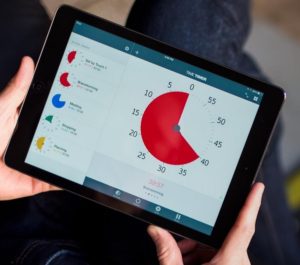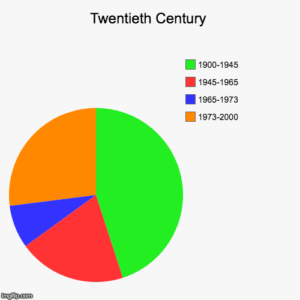Puzzling Over Timelines
I’ve been puzzling over timelines a lot recently.
I experience time very linearly, and have an excellent sense of how much time is passing when I’m working on a given task. I can estimate how much time has elapsed since class started without looking at a clock, and I can count off seconds to myself pretty accurately. My brain experiences time precisely, and organizes itself with ease. Timelines were meant for me.
But I have a friend who has ADHD, and for her, time is a much messier construct. Her disability makes it very hard for her to estimate how much time is passing
Which means, of course, that there must be numerous students in my classes for whom timelines are an obstacle to cognition. Their brains work differently from mine. And yet I have been teaching using timelines for years, never before considering that the information the class collectively puts up on the whiteboard is confusing for some people, rather than illuminating.
I’ve written about some of the problems with timelines in the past:
. . . timelines can also be limiting. They can rarely capture multiple perspectives on a single event, and they tend to elide the question of authorship—a timeline seems to simply be rather than being tied to a person, or a group, with a particular view upon the past. Timelines suggest a certain completeness—especially the versions presented in textbooks—that is at odds with the fragmentary, interpretive work a historian undertakes. It’s hard to construct a timeline that adequately shows the influence of ideas over hundreds of years, or which can connect events happening thousands of miles apart. Timelines privilege a Western, linear vision of time over alternate explanations, and, too often, timelines are also dissociated from a sense of place, existing with little reference to landscape or environment.
How to make timelines useful to everyone?
In the class that generated my article, each student made a 3D timeline, seeking to add complexity to the regular line-across-the-board staple. The students wove fabric, made honeycombs out of plastic, used atom modeling kits from chemistry, and drew bubbles and pyramids. Having students do this as a one-off exercise produced some amazing, innovative results, but the practicality of using these ideas, day-by-day, in a class of twenty-five students is debatable.

I asked the students to turn the timelines in so that I could look at them, and only one person worked out how to use the pie chart as I’d imagined they might – by drawing small segments within a larger segment, with dates written around the outside of the circle. I think I have to take this idea back to the drawing board. (I asked my friend what would be most helpful to her, and she drew a rainbow timeline, which may be something else to try.)

I have no solutions right now, only questions. I do think I’ll start next term asking students to think about a visual time organizer that makes sense to them, and see what they come up with – they may already know the way out of this conundrum. But I’m curious – have you faced this problem? What innovative teaching techniques do you have in your classroom to deal with time?